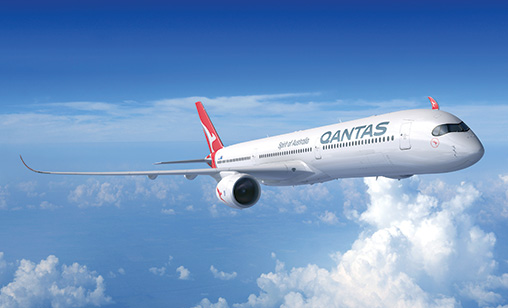News Backgrounder
Qantas selects A350-1000 as preferred aircraft for Project Sunrise
December 1st 2019
Qantas announced mid-month an Airbus aircraft was the preferred type for the airline group’s ultra-long-haul non-stop Project Sunrise flights. Read More » No orders have been placed, but the airline said it would work closely with Airbus to prepare contract terms for up to 12 aircraft ahead of a final decision by the board.
After evaluation of the A350-1000 and Boeing’s yet-to-fly 777X, Qantas has selected the A350-1000, powered by Rolls-Royce Trent XWB engines, as the preferred aircraft for the Sydney to London and New York flights if they proceed, the airline group said.
 |
Airbus will add a fuel tank and slightly increase the maximum takeoff weight of the aircraft to deliver the performance required for Sunrise routes, Qantas said. The Toulouse manufacturer also agreed to extend the deadline to confirm delivery slots to March next year.
The last of three research flights, this time from New York to Sydney, was conducted on December 17. The crew data collected from all three flights will be part of final discussions with Australia’s Civil Aviation Safety Authority (CASA) intended to win approval for the ultra-long-haul services.
Qantas is continuing negotiations with the representatives for the pilots for crewing Project Sunrise flights. An agreement with the pilots will close the last gap in the Sunrise business case, Qantas said.
Based on 60 hours of flying on the research flights, it has become clear dedicated space for stretching and movement, in particular for economy passengers, was necessary as were the benefits of re-designing the service onboard to actively shift people to their destination time zones, Qantas said.
“Between the research flights and what we have learned from two years of flying Perth to London, we have a lot of confidence in the market for direct services to New York and London from the east coast of Australia,” Qantas Group CEO, Alan Joyce, said.
“The A350 is a fantastic aircraft and the deal on the table with Airbus gives us the best possible combination of commercial terms, fuel efficiency, operating cost and customer experience.
“The aircraft and engine combination is next generation technology, but is thoroughly proven after more than two years in service. This is the right choice for the Sunrise missions and also the right economics to do other long-haul routes.
“We have done a lot of work on the economics and we know the last gap we have to close is some efficiency gains associated with our pilots. We are offering promotions and an increase in pay but we are asking for some flexibility in return, which will help lower our operating costs.
“Airbus has given us an extra month to lock in an aircraft order without impacting on our starting date, which means we can spend more time on hopefully reaching a deal with our pilots.”
Airbus and Boeing submitted their aircraft proposals for Project Sunrise last August. After reviews of the offers, Qantas told Toulouse and Seattle “to go back to their drawing boards” with the offers.
At a November investor briefing in Sydney, new Qantas International chief executive, Tino La Spina, told his audience: “We’ve asked them to re-look at them, to sharpen their pencils. There was a gap,” La Spina said. Qantas wanted the manufacturers to not only to consider price, but guarantees and conditions to deal with “what if” scenarios, he said.
“This aircraft is going to be in the fleet for the next 20 years. We want to cover off eventualities. Making sure it’s future-proofed,” La Spina said.
At the December briefing where it was revealed the A350-1000 was the preferred aircraft for Sunrise routes, Joyce said: “Can I thank both Airbus and Boeing for the tremendous effort they have put into Project Sunrise. It was a tough choice between two very capable aircraft, being made even harder by innovation from both manufacturers to improve what they already had spent years designing.”
Before the final test flight on December 17, Qantas had completed ultra-long-haul test flights with a 787; one from New York to Sydney of 19 hours 16 minutes followed by London to Sydney at 19 hours 19 minutes.
Joyce said based on media coverage of the flights, there was “huge demand” for the new services. He expected the airline could earn a 30% price premium over other airlines for tickets on the non-stop routes.